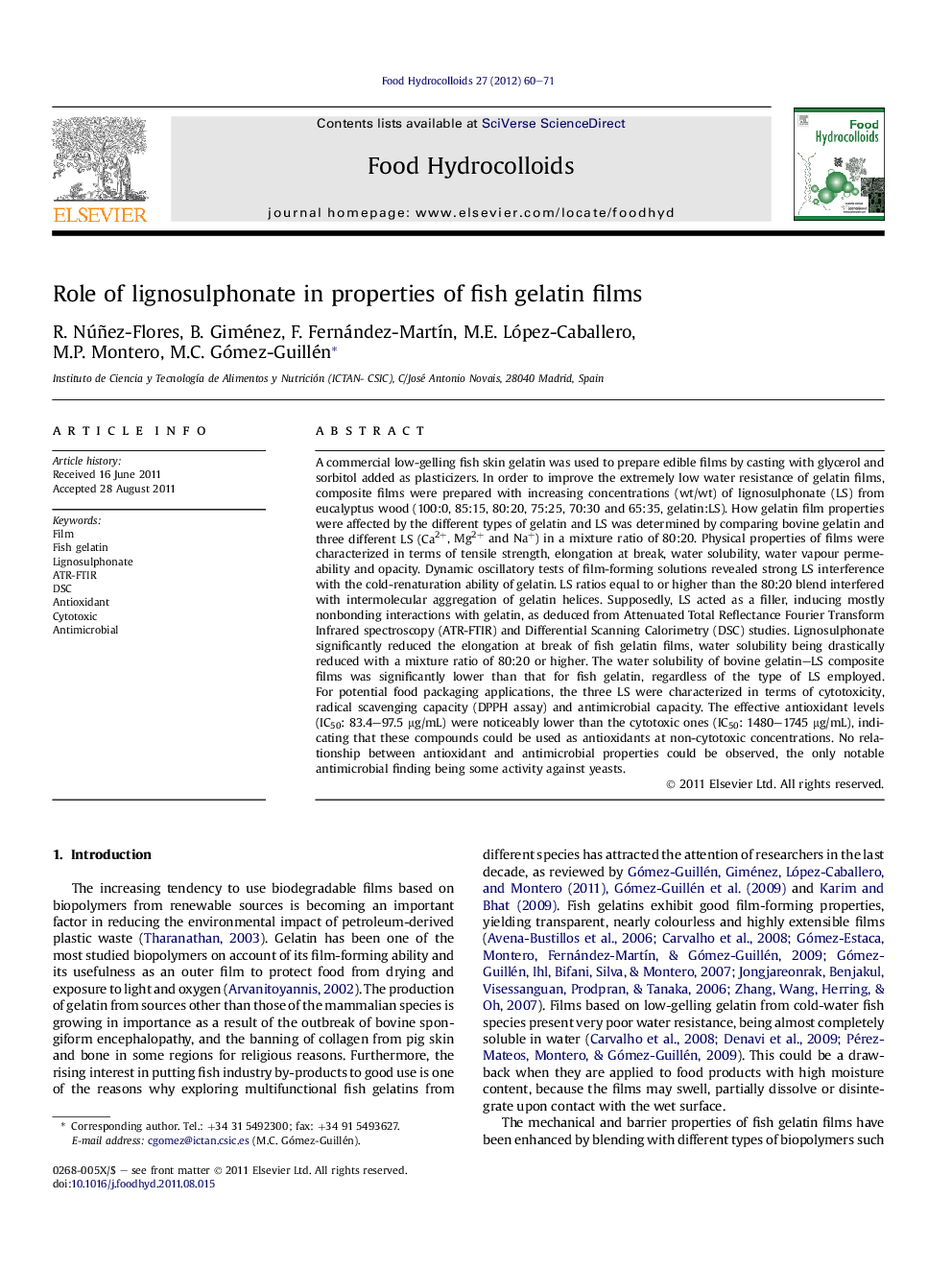| کد مقاله | کد نشریه | سال انتشار | مقاله انگلیسی | نسخه تمام متن |
|---|---|---|---|---|
| 604373 | 880305 | 2012 | 12 صفحه PDF | دانلود رایگان |

A commercial low-gelling fish skin gelatin was used to prepare edible films by casting with glycerol and sorbitol added as plasticizers. In order to improve the extremely low water resistance of gelatin films, composite films were prepared with increasing concentrations (wt/wt) of lignosulphonate (LS) from eucalyptus wood (100:0, 85:15, 80:20, 75:25, 70:30 and 65:35, gelatin:LS). How gelatin film properties were affected by the different types of gelatin and LS was determined by comparing bovine gelatin and three different LS (Ca2+, Mg2+ and Na+) in a mixture ratio of 80:20. Physical properties of films were characterized in terms of tensile strength, elongation at break, water solubility, water vapour permeability and opacity. Dynamic oscillatory tests of film-forming solutions revealed strong LS interference with the cold-renaturation ability of gelatin. LS ratios equal to or higher than the 80:20 blend interfered with intermolecular aggregation of gelatin helices. Supposedly, LS acted as a filler, inducing mostly nonbonding interactions with gelatin, as deduced from Attenuated Total Reflectance Fourier Transform Infrared spectroscopy (ATR-FTIR) and Differential Scanning Calorimetry (DSC) studies. Lignosulphonate significantly reduced the elongation at break of fish gelatin films, water solubility being drastically reduced with a mixture ratio of 80:20 or higher. The water solubility of bovine gelatin–LS composite films was significantly lower than that for fish gelatin, regardless of the type of LS employed. For potential food packaging applications, the three LS were characterized in terms of cytotoxicity, radical scavenging capacity (DPPH assay) and antimicrobial capacity. The effective antioxidant levels (IC50: 83.4–97.5 μg/mL) were noticeably lower than the cytotoxic ones (IC50: 1480–1745 μg/mL), indicating that these compounds could be used as antioxidants at non-cytotoxic concentrations. No relationship between antioxidant and antimicrobial properties could be observed, the only notable antimicrobial finding being some activity against yeasts.
Figure optionsDownload as PowerPoint slideHighlights
► A novel fish gelatin–lignosulphonate film, not previously reported.
► Improvement of water resistance of extremely high soluble fish gelatin films.
► Comparisons between fish gelatin and bovine gelatin.
► Lignosulphonate as potential candidate to be used in food packaging.
Journal: Food Hydrocolloids - Volume 27, Issue 1, May 2012, Pages 60–71